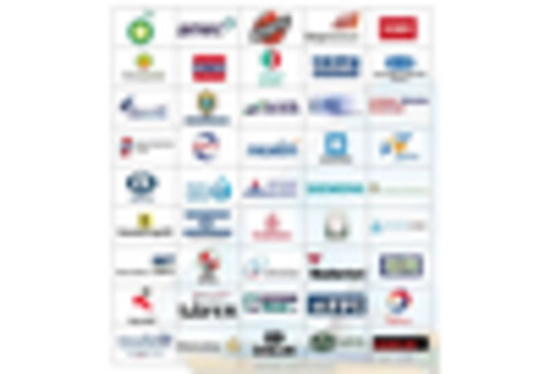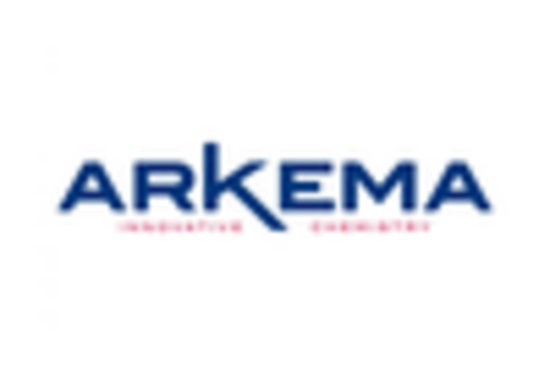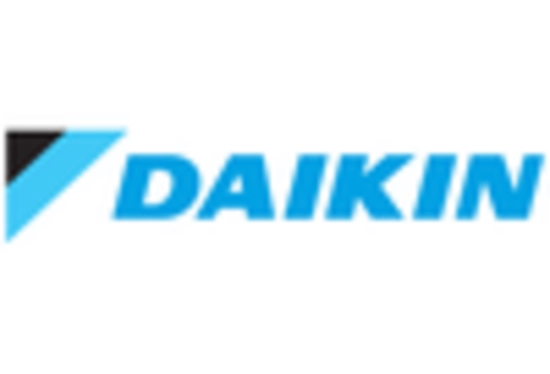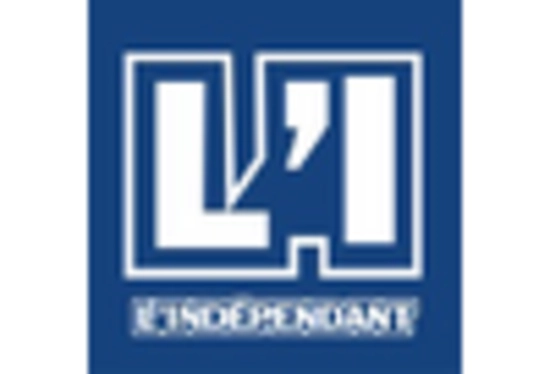Cost-Effectiveness
Cost considerations play a pivotal role in the Hydrocarbon Refrigerants Market. Hydrocarbon refrigerants, such as propane and isobutane, are often more cost-effective compared to traditional refrigerants. Their lower production and operational costs make them an attractive option for manufacturers and end-users alike. Additionally, the rising prices of synthetic refrigerants due to regulatory pressures are further enhancing the appeal of hydrocarbons. Market data indicates that the adoption of hydrocarbon refrigerants can lead to energy savings of up to 30%, which is a compelling factor for businesses looking to reduce operational expenses. This cost-effectiveness is likely to drive increased market penetration of hydrocarbon refrigerants across various applications, including commercial refrigeration and air conditioning.
Environmental Regulations
The Hydrocarbon Refrigerants Market is experiencing a notable shift due to stringent environmental regulations aimed at reducing greenhouse gas emissions. Governments worldwide are implementing policies that favor low-GWP (Global Warming Potential) refrigerants, which has led to an increased adoption of hydrocarbons like propane and isobutane. These regulations not only encourage the use of more sustainable refrigerants but also impose penalties on high-GWP alternatives. As a result, the market for hydrocarbon refrigerants is projected to grow significantly, with estimates suggesting a compound annual growth rate (CAGR) of over 10% in the coming years. This regulatory landscape is likely to drive innovation and investment in hydrocarbon technologies, further solidifying their position in the refrigeration sector.
Technological Innovations
Technological advancements are playing a crucial role in shaping the Hydrocarbon Refrigerants Market. Innovations in refrigeration technology, such as improved compressor designs and enhanced heat exchange systems, are making it feasible to utilize hydrocarbon refrigerants more effectively. These advancements not only improve the efficiency of hydrocarbon systems but also address safety concerns associated with flammability. Furthermore, ongoing research and development efforts are focused on optimizing hydrocarbon blends to enhance performance and reduce environmental impact. As these technologies continue to evolve, they are expected to drive the adoption of hydrocarbon refrigerants, making them a more viable option for various applications in the refrigeration and air conditioning sectors.
Consumer Awareness and Demand
There is a growing consumer awareness regarding environmental issues, which is influencing the Hydrocarbon Refrigerants Market. As consumers become more informed about the impact of refrigerants on climate change, there is a noticeable shift towards eco-friendly alternatives. This trend is prompting manufacturers to prioritize the development and marketing of hydrocarbon refrigerants, which are perceived as safer and more sustainable options. Market Research Future indicates that a significant percentage of consumers are willing to pay a premium for products that utilize environmentally friendly refrigerants. This increasing demand for sustainable solutions is likely to propel the hydrocarbon refrigerants market forward, as companies strive to meet consumer expectations and regulatory requirements.
Market Expansion Opportunities
The Hydrocarbon Refrigerants Market is witnessing numerous expansion opportunities, particularly in emerging markets. As developing countries continue to industrialize, the demand for refrigeration and air conditioning systems is on the rise. This trend presents a significant opportunity for hydrocarbon refrigerants, which are increasingly being recognized for their efficiency and lower environmental impact. Market data suggests that regions with growing urban populations and rising disposable incomes are likely to see a surge in demand for energy-efficient cooling solutions. Consequently, manufacturers are focusing on establishing a presence in these markets, which could lead to a substantial increase in the adoption of hydrocarbon refrigerants in the coming years.


















Leave a Comment